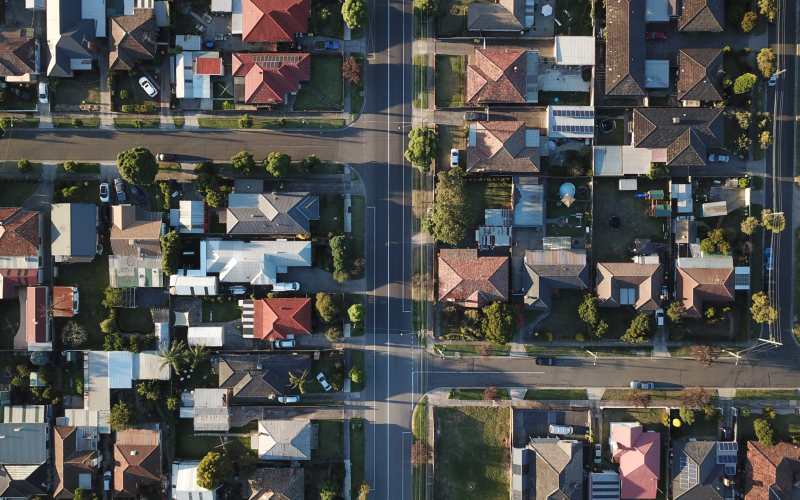Just like it takes money to make money, it’s easier to buy another house when you already own one. Accessing the equity in your existing property could mean you’re able to buy that holiday home on the coast without saving up another cash deposit.
What is equity in a property?
Put simply, equity is the proportion of your property you own outright. You can work it out by taking the value of the property and subtracting the outstanding amount you owe on your home loan. Let’s say James buys a $500,000 property in Sydney with a 20% deposit and a $400,000 home loan. Upon settlement, his equity is simply the deposit amount ($100,000). As he pays off more of the home loan, he’s building up more and more equity, until he ultimately pays off the loan, and owns the property outright.
Keep in mind also that equity is based on the current value, not the purchase price of the property. Let’s say after one year, James has paid off $25,000. At the same time however, the property market has tanked, and his home is now only worth $475,000. His equity would remain at $100,000 (the value of the property minus the outstanding loan amount of $375,000).
How can you use equity from refinancing to buy a second property?
You can refinance your home loan to access your usable equity, and then use this amount as a deposit to buy another property. Usable equity is usually calculated by taking 80% of the property value, then subtracting the outstanding debt. Lenders want to ensure borrowers always have a certain amount of equity to provide a cushion to protect against negative equity, where the outstanding amount owed is more than what the property is worth. This threshold is normally 20%. This is also why Lenders Mortgage Insurance normally applies to loans with an LVR of over 80%.
Let’s revisit James. Now he’s several years into his loan term, and has $200,000 outstanding on his home loan. He’s had several pay rises and now wants to buy a second home. He’s got his eye on a beachside apartment, available for another $500,000. He gets a valuation of his current property and finds it has appreciated in value and is now worth $600,000. He takes 80% of the property value (0.8 * 600,000 = $480,000) and subtracts the outstanding amount ($480,000-$200,000) to calculate his usable equity, which will be $280,000. To use his equity, he refinances his current loan to borrow an extra $100,000. He then uses this as a deposit on the beach property, and takes out another $400,000 loan on the new property (keep in mind that he will still need to prove to the lender that he will be able to pay off both loans simultaneously).
James now has the following assets and liabilities to his name:
-
A $600,000 property in Sydney on which he now owes $300,000
-
A $500,000 beachside property on which he owes $400,000
It often becomes easier to buy another house once you already own one. You can see how the domino effect could work; the more properties you own, the more available equity you have for future borrowing, and expanding your portfolio.
How to calculate your equity
If maths makes you teary, Savings.com.au's Equity Calculator can work out roughly how much equity is in your home for you to use. Just enter:
-
The property’s current value (you may need to get a valuation done)
-
Your outstanding loan balance
-
The interest rate on your desired loan
-
And how long you want the loan to be
Using equity to buy a second home
Besides refinancing, there are other options available which allow you to tap into your home's equity to buy new properties.
Line of credit loan
A line of credit loan is often more expensive than a traditional home loan, but it can be more flexible. These loans provide access to a set level of credit based on your home’s equity. You can use funds up to this set level and interest is only charged on the amount that you use. Whatever you borrow is secured against the equity you have in your property.
Reverse mortgage
Reverse mortgages allow people to borrow against their equity, but don’t require them to make repayments while they still live in the home. Instead, the interest compounds over time, and borrowers only have to repay the balance in full when they either sell the property or pass away. People under a certain age may not qualify for a reverse mortgage, as they tend to be geared towards older Australians who are ‘asset rich but cash poor’.
Cross-collateralisation
Using more than one property as security on a home loan is known cross-collateralisation. This is an alternative strategy James could use to buy his beachfront property. Instead of refinancing his current home loan, he could try to borrow the full $500,000 for the new property, and put up the $280,000 worth of usable equity as a security. This new loan is secured with both the entire beachfront property and his equity in his home. From the lenders point of view, the LVR is now roughly just 64% (a $500,000 loan secured against $780,000 worth of property), so the lender is likely to be comfortable with this.
Some people consider this to be a high-risk strategy, because if you can’t service the debt on one of the loans, you could lose more than just that one property.
Redraw facility
Any extra repayments you make on your home loan beyond the minimum monthly/fortnightly requirement can be accessible through a redraw facility (if your mortgage has one).
How to raise your home's equity
There are several ways you can boost the equity you have in your property
-
Renovating to boost the value of the home by more than what the renovation costs, including adding another bathroom or building a pool.
-
Making larger mortgage repayments
-
Making more regular repayments - weekly, fortnightly or monthly
-
Using a home loan offset account to reduce the interest you pay on the loan
What to watch out for when using equity to buy a second property
As with any major financial commitment, refinancing to access a property’s equity is definitely not risk-free.
If you’re using the equity to put a deposit on a second house, you’ll essentially be paying off two home loans instead of one, so you’ll need to ensure your cash flow can handle it. Also, as mentioned earlier, refinancing your current home to access equity is increasing the debt on your current home loan, so you’ll be paying it off for longer and paying much more in interest over the life of the loan.
You also need to consider the consequences property investment will have on your portfolio. Having most of your money tied up in the property market may leave your wealth overly concentrated in that one asset class, instead of having a diversified portfolio of cash, shares and property. So if the property market experiences a widespread dip, so too could your wealth.
Also, if you cross-collaterise, you run the risk of losing all the securitised properties should you become unable to service the loan.
Have a safety net available
If you’re purchasing your second property as an investment property, then be mindful that there may be periods of time where you aren’t receiving rental income, due to not having any tenants or your existing tenants suffering from unexpected circumstances.
If you don’t have landlord insurance for this, then having a ‘buffer’ of emergency cash stockpiled for slow periods can help you stay on top of your interest expenses. Even if it’s not an investment property, a second home can still have some cost surprises, e.g. unexpected faults or damage.
Is refinancing expensive?
Refinancing a mortgage can be costly, however, these costs can be recouped over time if you’re refinancing to a loan with a lower interest rate. The discharge fee will generally cost between $100-$400, upfront fees around $250, and potential break costs from fixed mortgages can cost thousands.
Savings.com.au’s two cents
Home equity can be one of the most powerful things at your disposal as a homeowner. Buying a second property using the equity in your existing home as a deposit, as opposed to saving up a cash deposit, has two major benefits:
-
You can buy that second property sooner: Saving up a cash deposit for another house can take several years, after which the value of the property you want to buy may have increased significantly. Buying that second property now using your home equity may help you get it at a lower price.
-
You’re not dipping into your cash reserves: Having an emergency stash of cash is vitally important for every household. When you’re buying a second property, that cash safety net can become even more important.
But with increased leverage comes higher risk, so properly assess your current situation and make a decision as to whether you can afford to service and pay off a second home loan (sometimes referred to as ‘stress-testing’). Our home loan calculator can help you work this out. As always, if you’re uncertain about any aspect of a potential financial decision, particularly one as large as a property purchase, consider speaking to a financial adviser to find the best course of action is for you.
Article originally published by William Jolly on March 26, 2021. Updated July 11 2023.
Image by Wiktor Karkocha via Unsplash

Ready, Set, Buy!
Learn everything you need to know about buying property – from choosing the right property and home loan, to the purchasing process, tips to save money and more!
With bonus Q&A sheet and Crossword!


 Emma Duffy
Emma Duffy
 Harrison Astbury
Harrison Astbury
 Rachel Horan
Rachel Horan
 Brooke Cooper
Brooke Cooper
 Denise Raward
Denise Raward

